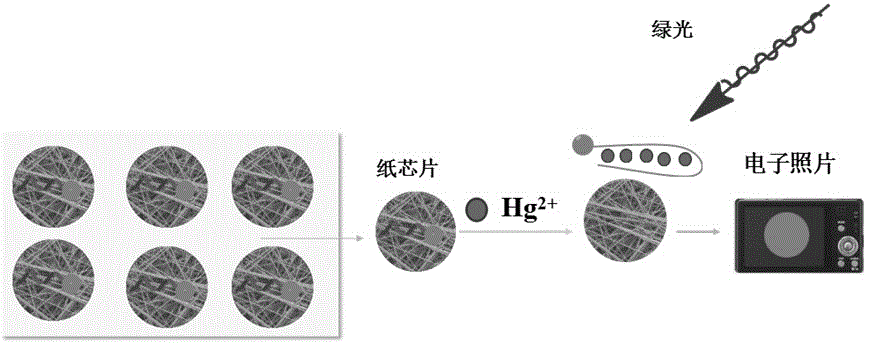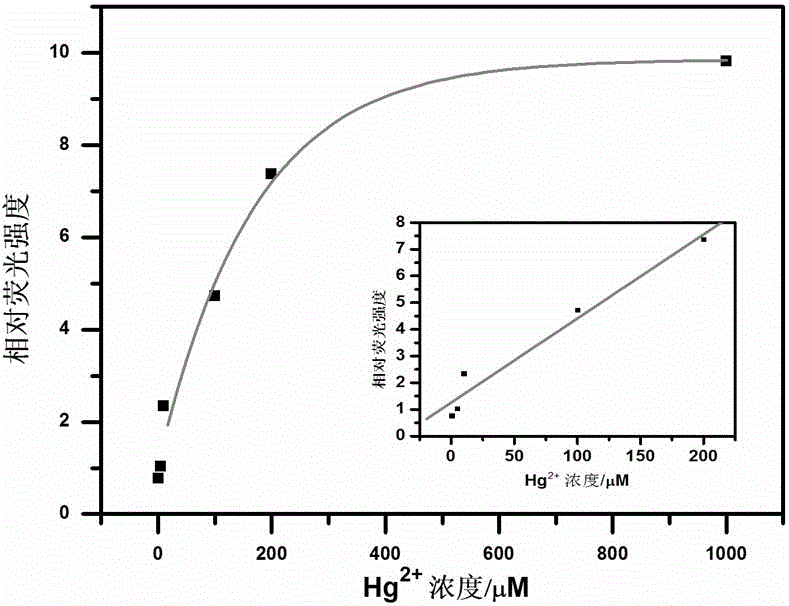Method for detecting mercury ion on basis of fluorescence resonance energy transfer of paper chip
A technology of fluorescence resonance energy and paper chips, which is applied in the field of detecting mercury ions, can solve the troublesome problems of making paper chips, and achieve the effects of reducing detection costs, being easy to cut, and the method is simple and easy to operate
- Summary
- Abstract
- Description
- Claims
- Application Information
AI Technical Summary
Problems solved by technology
Method used
Image
Examples
Embodiment Construction
[0026] The present invention will be further described below in conjunction with accompanying drawing:
[0027] 1. Using a home-style sheet cutting machine as the main tool for forming cellophane chips, designed and produced two-dimensional tiny paper chips (such as diameter: 3.0mm; thickness: 0.5mm), this paper chip does not require special modification or activation step;
[0028] 2. Sensitivity verification of mercury ion detection by fluorescence energy resonance transfer on a paper chip, the specific steps are:
[0029] (1) Take the sterilized paper chip and add 4.0 μL graphene oxide dropwise, and let it dry naturally;
[0030] (2) Add 2.0 μL Cy3-labeled mercury ion aptamer dropwise to the above paper chip; place it in a dark place until there is no obvious liquid accumulation on its surface;
[0031] (3) During the dark treatment in step (2), add 3.0 μL of mercury ion solution with a concentration gradient (gradient: 0.20.51.010.050.0200.0500.01000.0 μM) into the centr...
PUM
| Property | Measurement | Unit |
|---|---|---|
| Diameter | aaaaa | aaaaa |
| Thickness | aaaaa | aaaaa |
| Concentration | aaaaa | aaaaa |
Abstract
Description
Claims
Application Information
 Login to View More
Login to View More - R&D
- Intellectual Property
- Life Sciences
- Materials
- Tech Scout
- Unparalleled Data Quality
- Higher Quality Content
- 60% Fewer Hallucinations
Browse by: Latest US Patents, China's latest patents, Technical Efficacy Thesaurus, Application Domain, Technology Topic, Popular Technical Reports.
© 2025 PatSnap. All rights reserved.Legal|Privacy policy|Modern Slavery Act Transparency Statement|Sitemap|About US| Contact US: help@patsnap.com



